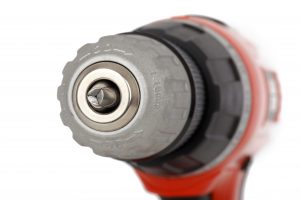Digital currency: the value of a recommendation
Digital currency: the value of a recommendation
The difference between a review and a recommendation goes beyond semantics.
This winter I took on the task of finishing our basement. I’m not the most skilled handyman, but I’m capable of getting the job done. Midway through the project I had to replace my drill, and that night I started shopping for a new one. As expected, there were countless options and I was left with a big decision: which drill is right for me?
I needed advice.
I turned to online reviews, hoping I could narrow my search to a few drills I should consider. What I found was anything but helpful. Here are a few reviews – which largely represent the majority of reviews – that would supposedly help me determine which drill was right for me.
Five stars: Very good. Well priced
Four stars: Christmas gift … was well liked
Five stars: It’s as I expected it.
Five stars: GREAT TOOL FOR MY NEEDS.
A review is a statement of the users experience; it leaves the potential consumer responsible for determining whether or not the product will work for his or her personal, unique needs. These reviews weren’t exactly glowing endorsements, examples of use-case, or comparative statements to countless other options. After reading through what felt like hundreds of these unhelpful reviews, I was still left with the ultimate question: which drill was right for me?

I didn’t need a review, after all.
I needed a recommendation.
A recommendation is guidance for a specific use case, giving the potential consumer context and confidence behind whether or not the product will work for his or her needs. After hours of filtering through useless reviews, I stumbled across a recommendation that helped answer my nagging question: which drill was right for me?

Three stars: This is the sort of drill usually marketed as a “handyman”or “homeowner” tool, the sort of thing you drag out of the closet to hang a picture or drive a screw or assemble a toy. For that, it’s not bad. The battery will hold a charge even if it hasn’t been used in weeks, and that’s good for occasional users. But it’s not the kind of serious tool a contractor or builder would want, and it’s certainly not a suitable tool for building a deck or remodeling your home. With just one battery and a slow charger, it’ll be several hours between uses if you run down the battery.
Consider that for just $20 more you can buy an 18 volt DeWalt with two NiCad batteries and a fast charger that’ll allow you to work all day without interruption. The DeWalt is a lot more powerful and rugged, too. And for just $40 more you can get a Dewalt DCD771C2 20V MAX Cordless Lithium-Ion 1/2 inch Compact Drill Driver Kit, with two lithium batteries and a fast charger that’s even better. Either would be a far better choice.
The next morning I visited Home Depot and asked the sales associate about the two DeWalt drills specified in the one recommendation I could count on. After a few follow up questions and an in-store demo, I purchased the DeWalt 20 volt cordless drill.
A few months later, my basement is finished and I’m looking for more ways to use my new favorite drill.
The difference between a review and a recommendation is well beyond semantics. Let’s not default to the loudest review, or to the sentiment of the masses. Instead, let’s focus on surfacing trusted recommendations to help consumers find the product that serves their needs.
If reviews are considered digital currency, what is the exchange rate for a recommendation? In my opinion, the value difference cannot be understated.





